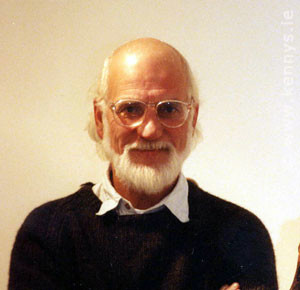North Africa
Zhang, Holden (Hong-Quan)
Holden (Hong-Quan) Zhang has a PhD in Fluid Mechanics and joined the University of Tulsa in 1998. In 2019, he published Revive Eden: Green Sahara Now. [1925] which investigates the disappearance of the Green Sahara and the possibility of reversing that event, not just in the Sahara, but in other desert regions also. In chapter nine of the 2nd edition of his book, he outlines his Atlantis theory.
Additionally, he recently published a YouTube video(a), in which he places Atlantis in what are now the chotts of Tunisia and Algeria. Although Zhang endeavours to present this as a new idea, it is not. In fact, it has been around for about a century, with continuous support ever since.
Zhang claims that his theory matches Plato’s description of Atlantis 100%! Wrong again; Plato clearly states twice (Tim.25a-b & Crit.114c) that Atlantean territory included some of North Africa along with part of southern Italy as well as a number of the islands in the Central Mediterranean region. So, in my opinion, Zhang is only partly correct regarding the extent of Atlantean territory. Nevertheless, I think he has made a useful contribution to the Atlantis debate.
A full written outline of Zhang’s theory is also available online(b).
I was amused to read in the same 2021 paper that Zhang wrote as follows about Aristotle’s description of the Atlantic Sea,
“This is not a description of the Atlantic that we know, which is not shallow, calm or lying in a hollow and which he refers to as a ‘sea,’ not an ‘ocean’.”
In 2018, on page 158 of Joining the Dots, I wrote;
“This is not a description of the Atlantic that we know, which is neither shallow, calm nor lying in a hollow and which Aristotle also refers to as a ‘sea’ not an ‘ocean’.”!!!!!
A further paper by Zhang was published in 2022 in support of his theories. This time he used details from ancient Egyptian Pyramid Texts.(c) >Zhang offers a video to accompany the paper(d).<
(a) Revive Eden 3 Convincing Atlantis – YouTube
(b) https://medcraveonline.com/IJH/is-atlantis-related-to-the-green-sahara.html
Central Mediterranean
The Central Mediterranean is a very geologically unstable region containing as it does all of Europe’s land-based active volcanoes(a), regular seismic(b) activity with the attendant risk of tsunamis. It is now estimated that a devastating tsunami will hit the Mediterranean every 100 years(c). While the Aegean region experiences the greatest number of earthquakes, the Central Mediterranean, particularly around Sicily is also prone to regular tremors.
The idea that Atlantis was situated in this region is advocated by a number of researchers, including Alberto Arecchi, Férréol Butavand, Anton Mifsud, Axel Hausmann, as well as this compiler. Plato unambiguously referred to only two places as Atlantean territory (Crit.114c & Tim 25b) North Africa and Southern Italy as far as Tyrrhenia (Tuscany) plus a number of unspecified islands.
The area between Southern Italy and Tunisia has had a great number of sites proposed for the Pillars of Herakles, while possible locations for Gades are on offer with a number places still known today by cognates of that name.
Plato clearly includes continental territory as part of the Atlantean domain as well as a number of important islands. Within a relatively small geographical area, you have two continents, Africa and Europe represented by Tunisia and Italy respectively, as well as the islands of Sicily, Sardinia, Corsica and Malta together with a number of smaller archipelagos, matching Plato’s description exactly. The later Carthaginian Empire also occupied much of the same territory apart from eastern Sicily and southern Italy which by then was controlled by the Greeks and known as Magna Graecia.
For me, the clincher is that within that region we have the only place in the entire Mediterranean to have been home to elephants up to Roman times – Northwest Africa.
(a) https://en.wikipedia.org/wiki/Volcanology_of_Italy
(b) The Europeam Mediterranean Seismic Centre – EMSC, records all activity in the region.
(c) Tsunami Alarm System – A3M Tsunami Alarm System (tsunami-alarm-system.com) (German & English)
Bucher, Raimondo
Raimondo Bucher (1912-2008) was born in the Austro-Hungarian Empire and was originally an  aviator, who took part in the Second World War. However, it was as a diver and underwater explore that he is best known. Arguably his best know discovery was the locating of the sunken Roman city of Baia in the Gulf of Pozzouli.
aviator, who took part in the Second World War. However, it was as a diver and underwater explore that he is best known. Arguably his best know discovery was the locating of the sunken Roman city of Baia in the Gulf of Pozzouli.
In 1957, Bucher discovered the ruins of what he considered to be remnants of an ancient civilisation in the vicinity of Linosa, one of the Pelagie Islands. He speculated on a possible link with Atlantis, noting “that the legend of Atlantis handed down by the Greeks just talk about a land that, in past centuries would have to be in the region of North Africa and Sicily.”(a)
(a) https://fortunadrago.wordpress.com/the-never-ending-story/colonello-c-cattoi/raimondo-bucher/
Linosa
Linosa is a small volcanic island in the Strait of Sicily, which along with Lampedusa and Lampione make up the Pelagie Islands. In 1957, Raimondo Bucher, the celebrated underwater explorer, discovered the ruins of what he considered to be remnants of an ancient civilisation in the vicinity of Linosa. He speculated on a possible link with Atlantis noting “that the legend of Atlantis handed down by the Greeks just talk about a land that, in past centuries would have to be in the region of North Africa and Sicily.”(a)
Pelagie Islands. In 1957, Raimondo Bucher, the celebrated underwater explorer, discovered the ruins of what he considered to be remnants of an ancient civilisation in the vicinity of Linosa. He speculated on a possible link with Atlantis noting “that the legend of Atlantis handed down by the Greeks just talk about a land that, in past centuries would have to be in the region of North Africa and Sicily.”(a)
(a) https://fortunadrago.wordpress.com/the-never-ending-story/colonello-c-cattoi/raimondo-bucher/
Civilisation Collapse
Civilisation Collapse has occurred many times over the past millennia in all parts of the world. The American anthropologist, Joseph A. Tainter[1539] defines collapse as “a rapid shift to a lower level of complexity(a) .” Societal disintegration immediately brings to mind the Maya, the Indus Valley and in what are relatively more modern times, the Western Roman Empire.
The causes are usually a combination of factors, such as climate change, warfare, disease or excessive expansionism. Global catastrophes such as encounters with comets or asteroids are rare, while more local events such as earthquakes, volcanic eruptions or tsunamis can also be thrown into the mix. These have all been encountered from time to time, but have rarely been blamed for the collapse of a society; full recovery from such limited regional events is usually possible.
The Mediterranean has seen its share of all these catastrophic events. A major tsunami on Sardinia, volcanic eruptions in Italy, and earthquakes in North Africa and the Eastern Mediterranean. Close encounters with extraterrestrial bodies have also been proposed in that region.
Perhaps the best-documented civilisation collapse is that which occurred around 1200 BC and affected many societies, particularly in the Middle East(b) . Israel Finkelstein, a leading Israeli archaeologist, has attributed this event to climate change and is of the view that this disruption was global in extent.
Inevitably, Atlantis has been cited as an example of civilisation collapse, particularly among supporters of the Minoan Hypothesis, who link the 2nd millennium BC eruptions of Thera with the demise of the Minoans on Crete. Also popular is the idea that Atlantis had been a large island in the Atlantic Ocean destroyed by a cometary impact or the rising sea levels as the glaciers melted at the end of the last Ice Age.>However these Atlantic suggestions would appear to be ruled out by Plato’s clear statement that Atlantis was destroyed by an earthquake.<
A variety of other theories have associated Atlantis with the collapse of a civilisation. For example, Frank Joseph claims that 40,000 years ago “sudden sea-level rises triggers migration from Mu around. The Pacific motherlanders settle on a large, fertile island about 380 kilometers due west from the Straits of Gibraltar. There, the newcomers merge with the native Cro-Magnon inhabitants, resulting in a new, hybrid culture – Atlantis.”>Unsurprisingly, Joseph fails to explain why refugees from the Pacific would travel all the way from the Pacific to settle in the Atlantic when their previous homeland was surrounded by more accessible alternatives such as the Americas, Australia, Asia and Africa. He also fails to explain how the migrants had the seafaring ability to travel such a distance. Furthermore, since all the oceans are connected this sudden sea level rise would also have had a similar effect in the Atlantic generating mass migrations there also.<
Flambas, P.P.
P. Philip Flambas is the Australian author of Plato’s Caribbean Atlantis[1368]. The self-explanatory title makes Dr Flambas’ objective clear. The book was published in Australia and is a hefty 932 pages and is also available as a Kindle ebook. The book is so enormous that a full critique would require another book. He outlined his theories on the Ancient Origins website(b).
In my opinion, the book has many flaws and is just a case of quantity masquerading as quality. One of my first gripes is that the author places Atlantis in the 10th millennium BC, a period during which there is NO archaeological evidence for any structured societies in either Egypt or Athens.
Even more ridiculous, is his suggestion that the Atlantean Empire was centred in the Caribbean and included what are now the U.S. states around the Gulf of Mexico, all of Mesoamerica and all the countries along the northern coast of South America. Then realising that Plato had also described Atlantean territory that included parts of Europe and North Africa, Flambas added them as well for good measure. Flambas accepts that the Atlantean territory included parts of Europe and North Africa but that, apparently unknown to Plato, the capital of this empire was in the Caribbean! I don’t find that credible, but readers will have to decide for themselves.
Eleven millennia later, Europe could not keep control of its American colonies even with improved navigation, vessels and weaponry, so how did his Caribbean Atlantis manage the control of its European territory?
Furthermore, Flambas is incorrect in saying that Plato noted that part of Atlantean territory extended as far as the Tyrrhenian Sea, in fact, he said that they controlled as far as Tyrrhenia (Timaeus 25b & Critias 114c), in other words, they held part of southern Italy. Even without that, if parts of the Western Mediterranean had been occupied by Atlanteans from the Caribbean, it is hard to believe that some knowledge of the existence of the Americas was not well known throughout the whole Mediterranean region, sailors not being known as the most tight-lipped people. But Flambas claims that this knowledge was not available to Europeans until Columbus, eleven thousand years.
Flambas has a large section on empires and their development through the occupation of contiguous territory, which I fully agree with, yet he proposes that these ancient Atlanteans preferred to expand across the wild Atlantic to colonise the Mediterranean rather than the easier option of pushing either north into North America or south into the equally valuable South America with shorter supply lines. Expansion across the Atlantic makes no sense.
On a more positive note, as a layman, I think that Dr Flambas has done creditable original work with his “Hydraulic Hypothesis” which relates to a modification of our view of Plate Tectonics. The extensive geological research carried out by him is admirable, but for me, his attempt to link it with Plato’s story of Atlantis is just a speculation too far.
Finally, his book is well illustrated, but to produce a volume of this size without an index is unforgivable. I was also disappointed to find that much of Flambas’ Chronology of Atlantis Theories was copied from this site, including errors, without any attribution!
Flambas has also written on the debate surrounding the abrupt ending of Plato’s Critias(a). He concluded that “rather than Plato leaving the Critias unfinished, a more likely explanation for its abrupt ending is that it was once complete and the remainder was lost, as were thousands of other Ancient Greek literary works. That loss may also include the Hermocrates dialogue, which was possibly the first or final part of a trilogy, or yet another dialogue that would have created four related dialogues.”
In a subsequent online discussion(a) about Flambas’ paper, the most salient opposing comment came from Thorwald C.Franke who proposed that Critias was never finished and “the Hermocrates wrote since there are not any other testimonies from ancient authors. All the other dialogues have left traces in ancient literature.”
>Flambas has produced a trilogy of videos to augment his book. Part 1 is now available on the academia.edu website(c).<
(a) (99+) Discussion: The Incomplete Critias.docx – Academia.edu
(c) (99+) Plato’s Atlantis – Part 1 The Atlantis Story | Photios Flambas – Academia.edu *
Idjennaden, Bob (m)
Bob Idjennaden is a Belgian author now living in Ireland, working in the field of business organisation.  His private interests include the study of North African prehistory and history. This has led to the writing of a series of short books, sometimes with co-authors, which deal with specific aspects of North African history and culture.
His private interests include the study of North African prehistory and history. This has led to the writing of a series of short books, sometimes with co-authors, which deal with specific aspects of North African history and culture.
*[An article on the tribes of the Roman province of Africa Proconsularis, centred around modern Tunisia should be read(b) in conjunction with Idjennaden’s work.]*
I am not aware of Idjennaden touching on the subject of Atlantis, in spite of the fact that Plato clearly states that the Atlanteans controlled Libya as far as Egypt. Nevertheless, many of the books deal with specific matters related to different Atlantis theories, such as the Sea Peoples[1195] , the Canary Islands and Berbers.
(a) https://www.amazon.co.uk/Bob-Idjennaden/e/B0079G2BM8
(b) https://melitainsula.blogspot.ie/2010/10/indigenous-tribes-of-africa.html
Tissot, Charles
Charles Joseph Tissot (1828-1884) was a French diplomat who was appointed ambassador to  Constantinople (1880). In 1884 he authored Exploration scientifique de la Tunisie(a) in which he echoed the views of Ignatius Donnelly and promoted the idea of Atlantis in the Atlantic, “where there must have existed a vast continent of which the Canaries and the Azores may be considered to be the remnants.”
Constantinople (1880). In 1884 he authored Exploration scientifique de la Tunisie(a) in which he echoed the views of Ignatius Donnelly and promoted the idea of Atlantis in the Atlantic, “where there must have existed a vast continent of which the Canaries and the Azores may be considered to be the remnants.”
>Although he never associated North Africa with Atlantis, he was very interested in the history of the region. Atlantisforschung notes that “In 1863 Tissot presented a dissertation, written in Latin, on his studies of Lake Triton (De Tritonide lacu). In it he argued, based on ancient texts – including by Herodotus, Pomponius Mela, and Ptolemy – and with reference to the (controversial) discovery of an old shipwreck near Nefta, that today’s Chott el Djerid is a remnant of the legendary, dry Lake Triton(b).” <
(a) https://gallica.bnf.fr/ark:/12148/bpt6k5747887n/f5.image.r=diodore+atlantes+berb%C3%A8res.langFR.swfv (French)
(b) Charles Joseph Tissot – Atlantisforschung.de (atlantisforschung-de.translate.goog) *
Marque, Bernard
Bernard Marque was a French historian who located Atlantis in North Africa in his 1933, 22-page booklet, La descendance des Ancêtres Paléolithiques de la Corrèze: L’Atlantide.
Quinn, Bob *
Bob Quinn (1935 – ) is an Irish filmmaker who was born in Dublin but now lives in Connemara in the west of Ireland.  Although he does not concern himself with demonstrating the reality of Plato’s Atlantis, he published a book [534] based on his four TV documentaries(a), which outline a wide range of ancient cultural connections between Ireland and North Africa, as well as other regions. The book and DVDs are a valuable source for those that see Atlantis as an echo of a prehistoric cultural ‘empire’ stretching along the North African coast and up the western seaboard of Europe. This would broadly coincide with those regions that are richest in megalithic remains.
Although he does not concern himself with demonstrating the reality of Plato’s Atlantis, he published a book [534] based on his four TV documentaries(a), which outline a wide range of ancient cultural connections between Ireland and North Africa, as well as other regions. The book and DVDs are a valuable source for those that see Atlantis as an echo of a prehistoric cultural ‘empire’ stretching along the North African coast and up the western seaboard of Europe. This would broadly coincide with those regions that are richest in megalithic remains.
The possibility of a North African link with Ireland would appear to be reinforced by a number of 19th-century reports of the Irish language being understood by visitors from North Africa(d). Additionally, there have also been wild claims of black Africans coming to Ireland in very ancient times(e).
Quinn visited the enormous stone circle at Mzora in Morocco and was struck by its similarity to Newgrange in Ireland(b).
Edo Nyland credits Quinn’s book as having provided some of the inspiration for his own Odysseus and the Sea Peoples [394].
Commencing Sept 27th 2011, the Irish TV channel TG4 broadcast a series of his documentaries every Tuesday, each one introduced by Quinn himself.
Quinn’s Atlantean documentary is available on YouTube(c).
(a) Atlantean | conamara.org (archive.org) *
(b) https://heritageaction.wordpress.com/2011/01/27/the-mysterious-moroccan-megalithic-menhirs-of-mzora/ (see the last comment)
(c) https://www.youtube.com/watch?v=Ec0m88nT4G0
(d) https://www.libraryireland.com/articles/IrishLanguageAfricaUJA7-1859/index.php

